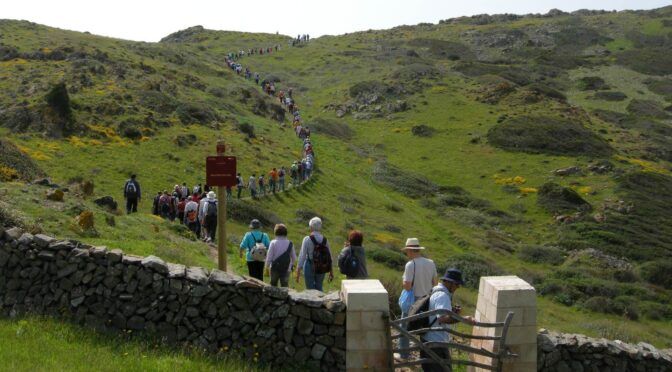Views: 1240
We are prisoners of the social moment in which we happen to live. At the end of the Franco regime, there was a strong desire for change, to break free from that barracks-like atmosphere. Everyone imagined a different reality, a different kind of society, with more breathable air. Now that we have freedom, a globalized economy, and countless whims within reach, it is harder to look beyond the wall.
People who are concerned about Menorca’s future are asking what the island might be like fifteen years from now. Will it have followed the path of its sister islands? What will the aquifers be like? Will the housing issue be resolved? How will waste be managed?
In the 1980s, people who mobilized to prevent the urbanization of emblematic spaces were accused of blocking the economy. In the 1990s, progress was proclaimed to mean more golf courses and more marinas.
Around the turn of the century, there were repeated attempts to build a large dock in Ciutadella’s old harbor, which included a development stretching to Cala en Blanes and other atrocities. In some election campaigns, the central issue was whether to double the main road. Or whether to include large two-level roundabouts and a non-motorized path that would gradually reclaim space for the future.
Many of these major attempts to transform the island were left hanging, after numerous headlines, dozens of press conferences speaking as if things were already decided, and significant efforts by people who have never resigned themselves to stop imagining a better future.
Now, Menorca is engaged in an intensifying debate about how much tourism the island should accommodate, and what kinds of tourism should or should not be promoted. It is about determining how many people are appropriate to gather on the island and its surrounding coastline, and discussing what limits should be considered. But there are pressures trying to prevent this analysis from going any deeper.
The situation is somewhat reminiscent of Margaret Thatcher’s TINA—There Is No Alternative—which the Iron Lady used to claim there was only one possible economic path. But in Menorca, we have an advantage. We know what Menorca will look like fifteen years from now if we don’t manage to change course. We will be like Ibiza. The question is what it could look like if we work to find a different path.
To imagine another future, it is essential to remove the blinders and dare to speak about what is necessary, about the challenges we must overcome, about the options that could be pursued.
Social analysts often say that the vision of Thatcher (and Reagan) eventually triumphed due to two significant shortcomings among those who saw things differently. One of these was immediacy — the tendency to expect things to be done differently in a short amount of time. And that doesn’t work.
Most of the areas that were preserved in Menorca required campaigns lasting more than 10 years. In some cases, over 20.
The other difficulty that arose was the kind of vision that aims to change everything, under the premise that otherwise, nothing is worth doing. We are not in the 1970s anymore, and reality is usually a mosaic of different pieces.
2,500 years ago, Heraclitus already understood that the only constant is change.
(This text is an adaptation of the original article published by Miquel Camps, as coordinator of territorial policy for the GOB, in the Menorca newspaper on 28/04/2025).

